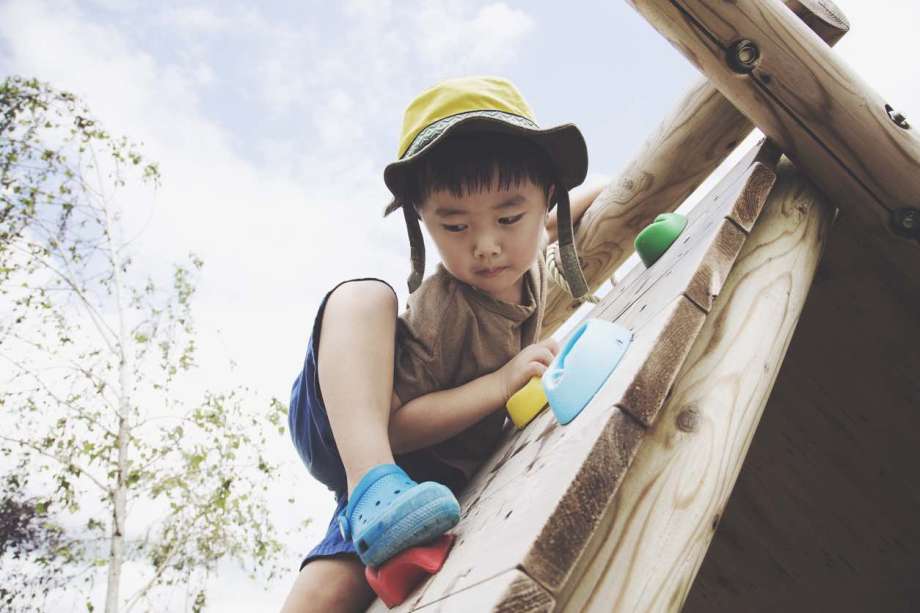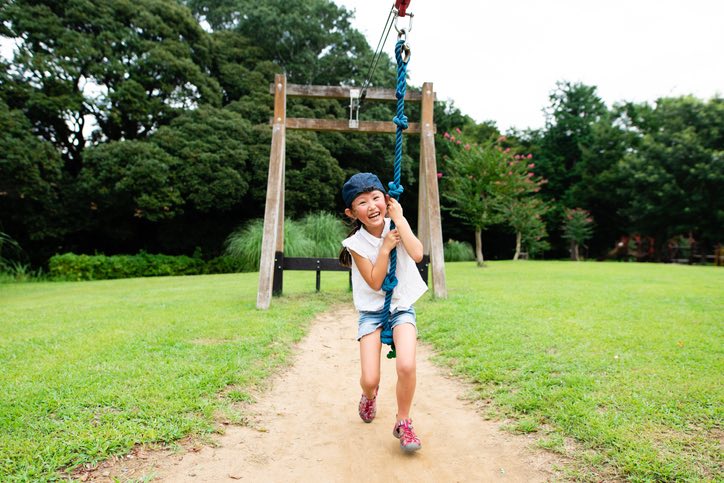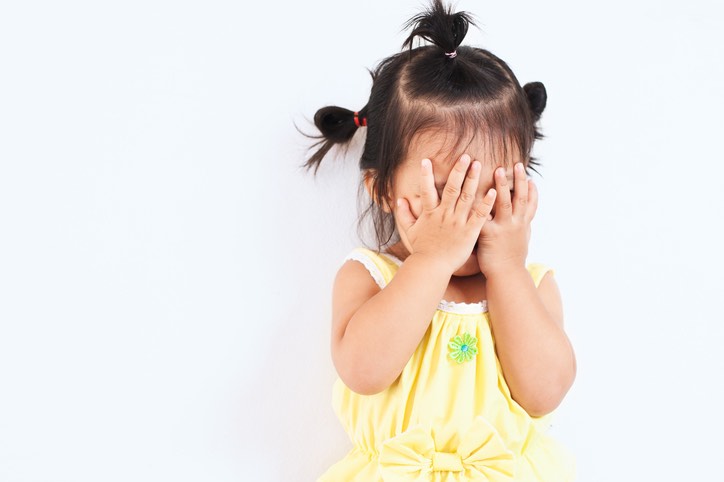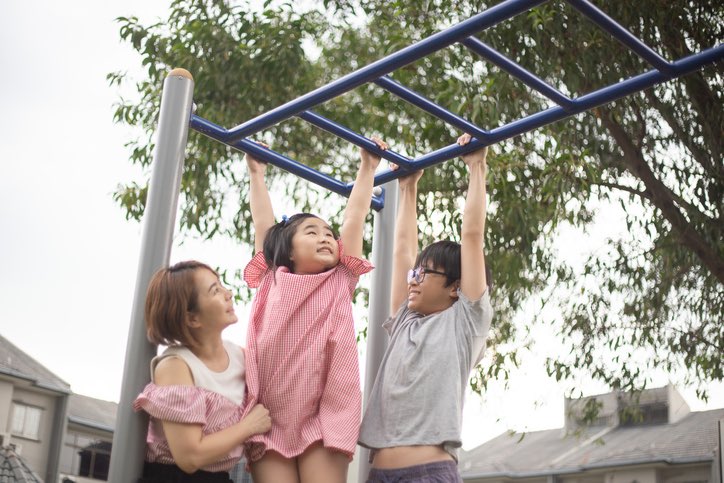I’m Not a ‘Helicopter Parent’ and That’s Okay

As a parent, protecting my kids and keeping them safe from harm is my top priority. But every parent has a different approach to teaching their children how to build resilience. I allow risky play so that my kids can overcome their fears, and so that I can instill a sense of confidence in them for the rest of their lives.
Imagine the following scenario...
I watch carefully as my son places one foot in front of the other, climbing to the top. I don’t hover. I don’t stay close. I’m off to the side with my arms crossed. I may look calm, collected and self-assured on the outside, but I’m trembling with worries on the inside.
I’m holding my breath, fighting my instincts to grab him so he doesn’t fall. I’m counting to 10 in my mind and slowly easing those nervous feelings with thoughts like, “He’s going to be okay. He is developing his big muscles and learning about his body and his limits. It isn’t too high. The risk is safe enough for him to explore.”
Off he goes, headfirst…WHEE!
But he’s going too fast. He smashes his face into the pile of woodchips. After a deafening silence, the loudest cry I’ve ever heard pierces my ears.
Other parents watch the horror of my “negligence” as I give him a warm hug and dust him off. It’s not that I don’t want to protect him. I’m letting him explore risky play so he can test his abilities and learn how to navigate the world.
At this point, it’s important to say: I’m not putting my kids in excessive danger by leaving needles, nails, lighters and knives around or letting them run around in the streets unsupervised. I’m not letting them engage in play that will cause them to end up injured or in the emergency room. Rather, my approach is about giving them safe, unstructured play time and not stepping in every time I feel slightly uncomfortable with what they're doing. I focus on creating environments where my kids know I have their back but they have the latitude to experiment outside their comfort zones. Here’s why:
1. It builds a lifelong appreciation for their bodies and encourages physical activity

Whether it’s running as fast as they can across the field at the risk of tripping or standing on a see-saw while it topples up and down at the risk of falling, letting kids test their abilities in these situations allows them to build their gross motor skills, balance, coordination, and most importantly, a love for movement and activity.
The more young children are able to learn about their bodies and how they can move, the more they will enjoy active play, appreciate what their bodies can do for them, and understand why it’s important to take care of our health and physical well-being.
2. It teaches them how to manage their emotions

Letting my kids learn to take risks provides an opportunity for them to manage difficult emotions like nervousness, fear and anger. Not intervening immediately and being able to let go of my fears when they have these feelings lets them experience the emotion fully and learn how to express it in a healthy way.
For instance, when I see my kids starting to argue over a toy and I sense it may turn physical, I don’t intervene right away and play referee. I continue to observe but I give them time and space to develop their conflict management skills.
Sometimes, it turns into a brawl and I have to separate the two. But there have been more and more instances where they’re able to find a compromise, diffuse the tension, and learn to share or discover other ways to play.
3. It encourages them to try new things
If I let my own fears get in the way of my children’s freedom to experiment with risky play, it will limit their chances to get outside of their comfort zones. Children are constantly learning about the world, the big ‘W’ questions such as ‘who’, ‘what’, ‘where’, ‘when’ and ‘how’.
They need to get comfortable with those new experiences and situations so they can overcome their fears and work through the initial nervousness and feelings of hesitation. In turn, they become more courageous to try new things and develop an open mindset that encourages them to continually learn more about how the world works.
4. It boosts their self-confidence

One of the best feelings in the world is when we see a challenge, try to overcome it, fail, try again and again and then finally succeed. Although watching your child go through a hard time is not easy for any parent, I want my children to experience that moment of how good it feels when they finally succeed. My hope is that it will instill a sense of self-confidence when facing life’s future obstacles.
Last year, my daughter saw another kid swing on the monkey bars from one end to the other without falling. She was amazed. She wanted to try it too. But she was scared.
I helped her get up but I stepped back while she tried. Within the first bar, her hand slipped and she fell flat on her back on the ground. She had the wind knocked out of her. It hurt and she cried.
After checking for injuries, and giving a lot of comforting hugs and kisses, I asked whether she wanted to try again. She was up for it. And over the next few weeks, we went to the playground again and again so she could practise getting confident with the playground equipment. One day, she made it from one end to the other of the monkey bars and back. She was so proud of herself for sticking to it and not giving up. The first time a toddler achieves something new can be an extremely special moment.
Whether it’s swinging on the monkey bars, studying for an exam, training for a race, practicing for a musical performance or pursuing a promotion, I want my kids to develop the drive, resilience and persistence to achieve their goals.
Ultimately, I’m learning at the same time as my children are. Letting them explore risky play makes me just as uncomfortable as they are. However, for me, the benefits of allowing them the freedom to engage in potentially slightly dangerous situations outweigh the risk of overprotecting them from harm.

